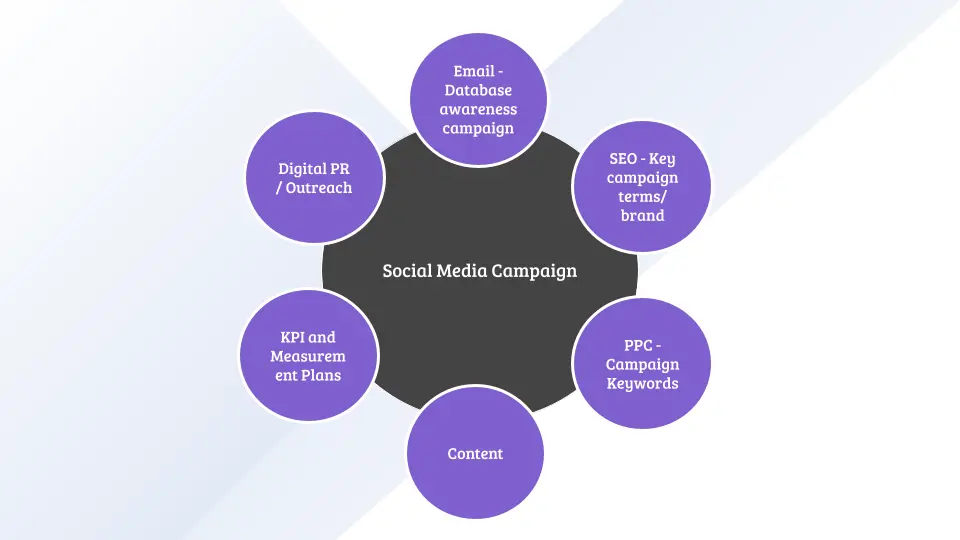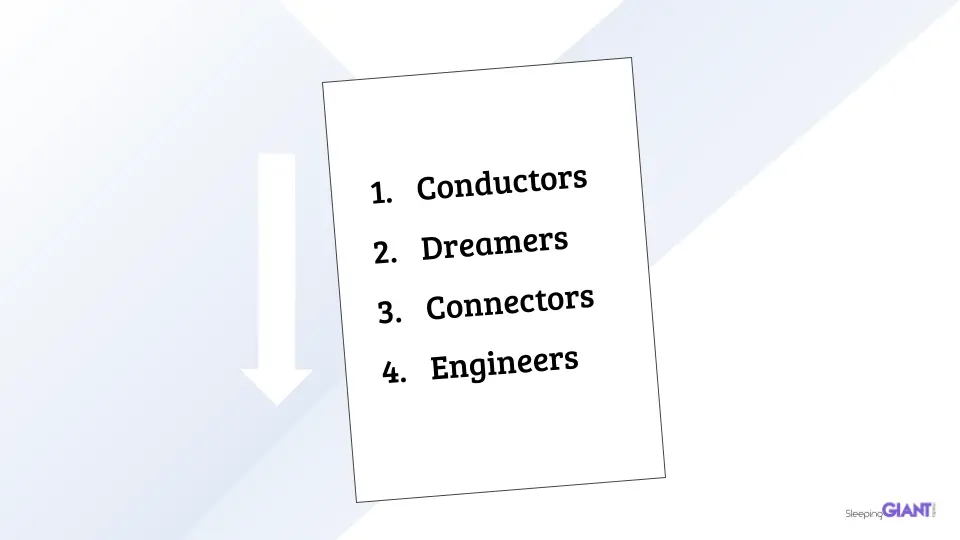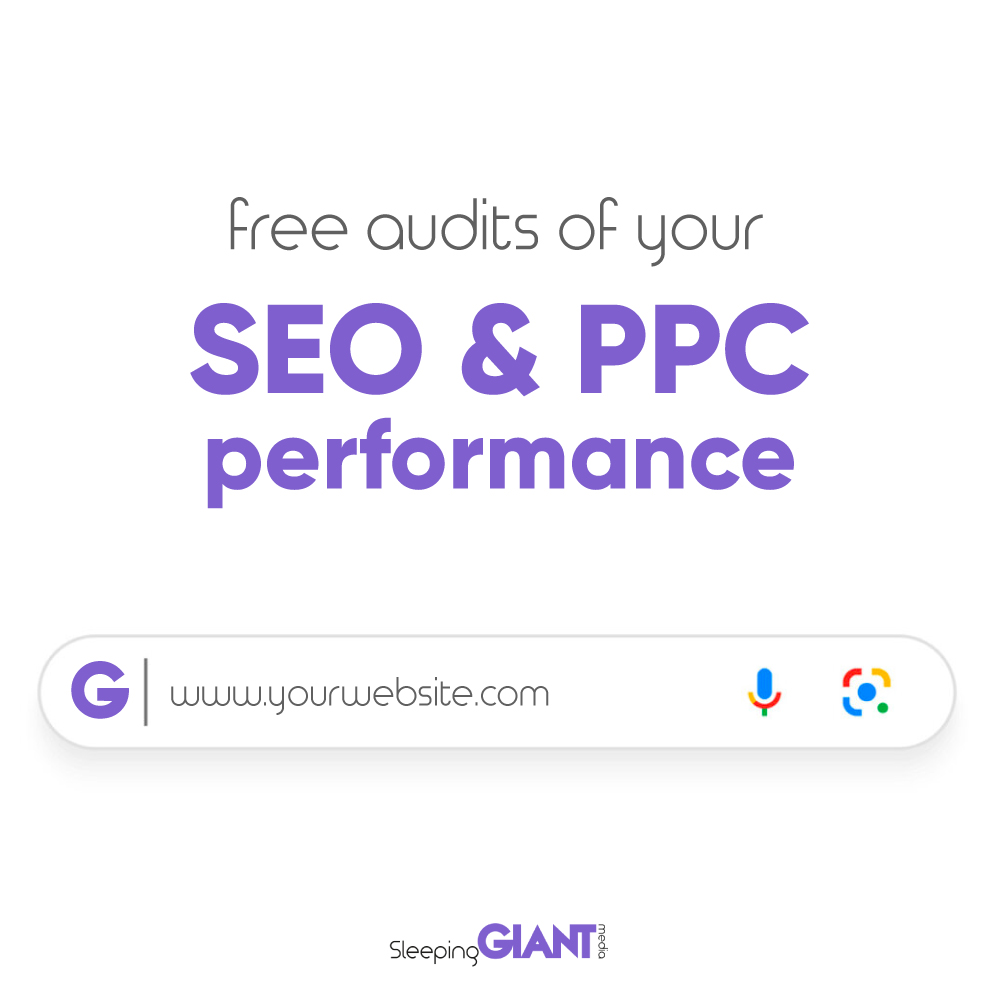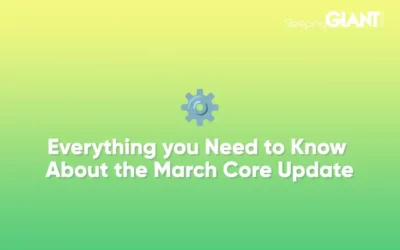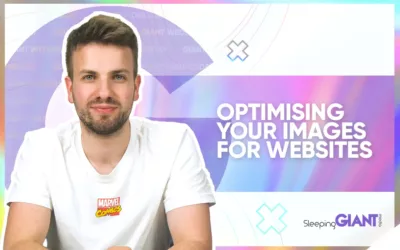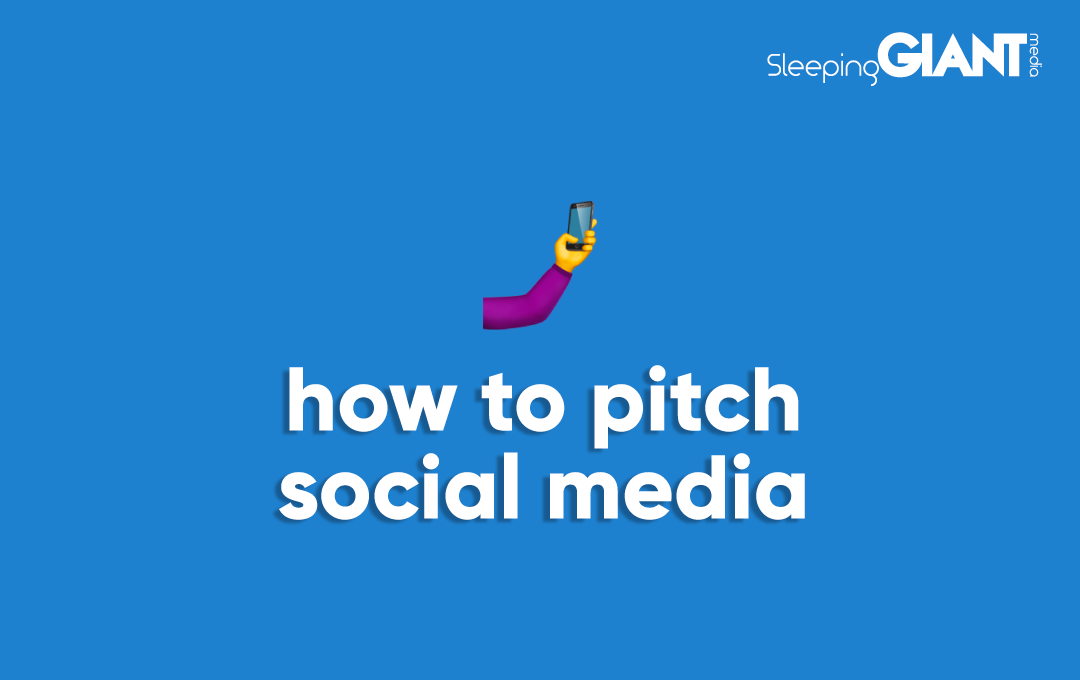
How To Sell Social Media Marketing To Your Boss
In October 2022 I delivered this talk to a huge audience at Brighton SEO – they came to see my talk because the title resonated, and I’m going to assume you too are here because you have some kind of vested interest in social media and in particular social media campaigns.
You might consider yourself to be one of these power rangers, right? Or you may just wear multiple of these suits in your role…
You probably spend a lot of time putting together concepts and strategies which you then have to pitch to clients or senior stakeholders (your boss) to get their buy-in, right? Even just to ask if you can set up a TikTok channel for your business. And that conversation, that necessary persuasion, can usually be the trickiest part of the whole process.
Well, that’s what my talk and this blog are all about.
How To Pitch Social Media Campaigns
Before it comes to actually pitching your social media campaign, there are some things to factor into your concept during those early planning stages, way before it’s ready to pitch.
So here are some things to take into account during the initial planning phase:
First up, you need to become the Megazord by…
Including other channels as part of the overall strategy.
Working across multiple channels is the best way to achieve your goals as it targets users across multiple stages of their user journey online and reinforces the message you’re trying to get across.
If you think about how other channels can feed into your idea/strategy you’re also much more likely to get stakeholders who look at the bigger picture to buy in. And that’s without even thinking about the benefits that a joined up strategy can provide your campaign with.
So while social media will be the key focus of your pitch, think about how you can integrate SEO, PPC, email marketing, PR and other marketing channels for greater overall performance..
For example, if your campaign is focused on launching a new product, you could try:
- Having any taglines and imagery used in this activity utilised across the website, in your PPC ads, in publications and wherever else it makes sense to
- Including any relevant keywords or search terms as part of your SEO and PPC strategy
- Create and use banners with the tagline and imagery as your email signature for your email marketing
Secondly, make sure that the power of social media as one of those marketing channels is understood. While awareness of our little corner of the digital marketing world is getting better, it’s still not always valued as a crucial part of the user journey in the marketing funnel by everyone.
So whether it’s an organic or paid social media campaign – or a bit of both, make sure you’re making it clear what the impacts and KPIs of this activity will be, and be REALISTIC about it.
This is where including other channels as part of this activity (like we mentioned earlier) will benefit you, as success is not entirely determined by your channel, but the work that you do supports all the activity across a more joined up approach.
And finally, in those initial planning stages, think about how you can get this campaign to tie into important goals or KPIs for the brand.
For example, if you know that the client or more senior members of your business are really keen to grow awareness of the brand, you might want to gear the campaign around that.
That isn’t to say that you need to change your entire concept just to meet their goals, or that you shouldn’t bother with any ideas that won’t tie in with those goals.
Thinking about how your campaign can meet goals early on, chances are you’re more likely to get an enthusiastic response. Quick Wins and ‘low hanging fruit’ are great motivators.
And tying in other aspects of your digital marketing as mentioned above is another extension of this as it shows that you’re thinking about wider goals and the path that users take rather than just what you and social media can bring to the table.
But now, let’s talk about just that – what you bring to the table!
Think About Who You’re Pitching To
Just like anything you do with social media, think about who your audience is. Who are you pitching to?
Ultimately, your pitch – from the content and the information, right down to the tone, needs to be designed with your audience in mind.
Now, thinking about your audience when you’re pitching to them is slightly easier than if you were thinking about your audience on social media platforms because… well most of the time you know them!
To build strong relationships and establish trust, which is important when it comes to getting people to buy into your ideas or your pitch, you need to work out how they communicate and how they digest information.
Of course, everyone’s brain is a little bit different, but we’re going to break this down into four main groups just to make things a little bit simpler.
And rather than just describe the different types and their attributes, I’m going to use people we know from popculture – I’m sure you’ll know some of them…
Dreamers
So, what do Michael Scott, Gina Linetti, Thor and Phil Dunphy etc have in common?
Well, they’re all creative, story-loving dreamers in some way shape, or form.
So, if you want them to be on board with a plan or idea, you’ve got to explain it into more of a narrative or a story that makes it easier for them to buy in. So rather than explaining your concept in a detailed, structured way with loads and loads of data, the way you’ll get their attention and get them onboard is by inspiring them through telling stories of what your vision is and how you’re going to achieve it.
Storytelling is CRUCIAL for people who fall under this kind of group. And chances are as soon as they’re onboard, they’ll have lots of ideas of their own that they’re willing to share with you.
Engineers
But, while that works for those guys – what about your Dwight Schrutes, Amy Santiagos, Bruce Banners and Alex Dunphys?
Well, these guys are your engineers, fairly methodical, love problem-solving and getting into the details. So while a story can help give them the context and the overall bigger picture, it’s not going to be enough for them, they want more detail and to understand things at a much more granular level – potentially even with the inclusion of data to back up your ideas.
And, if you want them to think about the bigger picture or kick it up to a faster pace, you need to make that clear to them and then let them get into that mindset. Ultimately, be detailed, well-prepared and ready to answer questions – because they’ll certainly have many.
Conductors
But wait! That’s not going to work for someone like Stanley Hudson, Captain Holt, Tony Stark or Jay Pritchett.
Well for these guys, less is more! They’re much more about the bigger picture, almost like an orchestra conductor who’s trying to produce a stellar show by getting the different sections of the orchestra to work together and deliver their best performance.
They’re not as interested in the little details of everything, instead, they’re all about having a big-picture challenge.
But once they’ve bought in, if they need to know more, they will ask you questions. You’re better off outlining your end goal and how you plan to get there in a succinct but informative way. And then if they want to know more, that’s when you can slowly make your way into the nitty gritty.
Connectors
And then finally, you’ve got your Pam Beasleys, Terry Jeffords, Captain Americas or Cameron Tuckers.
These guys are your Connectors, all about other people’s wellbeing, teamwork and connecting with people. They make their decisions based on how it’s going to impact others, so facts and figures won’t sway them, but fairly similar to our dreamers, a story that evokes emotion or feeling, thinking about how your idea is going to make people feel and think – that’s how you’re going to get them onboard.
It’s worth noting too, that many senior stakeholders are conductors or dreamers – much more interested in the narrative as well as the outcomes you’re aiming to achieve (ideally aligning with their own overall goals)
But hold on, that’s so many different approaches! How on earth are you meant to be able to create a pitch that conveys all the required information that will resonate with each of those different groups – especially if you’re pitching to multiple people that all fall under a different group?
How To Structure A Pitch For Different Thinkers
Now, I’m not suggesting that you make four different pitches, each designed for one of those four audience types – because putting together one pitch deck is a lot of work! But instead what I would suggest is to develop the whole pitch for all four styles.
Have a summary slide or two that condenses down the key information for each audience type and then you can have the more detailed slides for each of those different types to follow. This means that no matter who is at your pitch, regardless of how they digest information, you have slides catered to them.
So now, if you have to present to multiple people, you have two options.
Firstly, figure out whether you have multiple of the same audience type in the group and whether you can hold multiple pitching sessions. For example, if you know that two of your senior stakeholders are conductors, then you might want to hold a separate pitch session for them where you can present the fully fleshed-out conductor slides of the pitch, followed by the summary slides of the other three styles so you don’t waste any time giving them information in a style that doesn’t work for them.
However, if you can’t hold multiple pitch sessions, then you’re better off including all four styles with varying levels of focus, and this is where the summary slides really come in handy. If you do need to cater to the four different styles in one session, I’d recommend structuring it in the following order:
- Conductors
- Dreamers
- Connectors
- Engineers
This is because conductors, who simply want the key points will have their needs met and can spend more time thinking about areas they’d like more information on while you go through the rest of the styles (which you might have already covered in the other styles’ slides!), reinforcing the main points at the beginning for the dreamers before going into the storytelling can help to centre them right from the off.
The connectors and engineers will also benefit from the storytelling aspects as the connectors can use the narrative to understand the impact it will have on people while the engineers can use it to help them gain context and start to dig deeper. Finishing off with the engineers’ section is really beneficial because it allows everyone to look at the nitty-gritty details that might answer some of the questions they’ve already been thinking of since you ran through their section.
One thing to remember is that, while people might clearly fall under one of these styles, they are not exclusively limited to the way that style thinks. People are complex! I personally actually fall under a bit of all of them and so need a bit of a hybrid style when it comes to receiving information. That’s why those summary slides are super important to keep in even if you are pitching to people who all fall under the same group because actually, those other styles might provide them with everything they need to fully get on board with your concept.
Moving on, let’s take a look at how we might use this in practice. A ‘here’s one I made earlier’ type scenario…
Here are a few examples of how we might do this for some already existing campaigns.
Share a Coke
Let’s start with the ‘Share a coke with…’ campaign. We all know just how successful it was, and even if I am still slightly bitter about the fact that I never got my name on one of those bottles, it was an incredible campaign that initially started in Australia before making its way around the world, resulting in the extension of the overall campaign as well as having multiple phases.
But if we were to go back in time and break it down in terms of how we would pitch this to our different audience types:
For the Conductors, we’d probably aim to keep the basics of the campaign fairly succinct –
The key ambition is to both strengthen the brand’s bond with Australia’s young adults – and inspire shared moments of happiness in the real and virtual worlds. To do so, we will be swapping out Coke branding on bottles and cans with the 150 most popular monikers in Australia. The research shows that while teens and young adults love that Coca-Cola is big and iconic, many feel we’re not talking to them at eye level. Australians are extremely egalitarian and so this campaign can bring us back to ground level with them and create an experience, increase user-generated content being shared on social media and other channels, create demand for more unusual names etc and ultimately increase sales.
For the Dreamers, we’d then tell a bit more of a narrative to make them feel excited about the buzz around it – the key concept is for consumers to be able to share an experience with each other with coca-cola at the forefront, the sentiment of sharing or giving a coke to someone else rather than just getting one for yourself. So consumers will go into the shops and spend time looking for their friends’ & family’s names, and when they “share a coke” with them, that friend or family member might share it on their social media platforms “just the pick-me-up I needed” etc. Consumers could even share pictures of names that they’ve specifically put next to each other like Holly and Phillip or Jennifer and Brad as a nod to pop culture references etc. all of this creates a fun experience, centred around our brand, making us more relatable and boosting sales.
For Connectors, you’ll want to talk about the more emotional impacts that this might have on consumers, about how they’ll be able to feel a bit more special when they find their own name. The excitement of finding your own name or your friends/family members’ name etc. and how it can feel a bit more touching if someone gives you a bottle with your name on it.
For engineers, you’ll want to talk about facts about the Australian market and how as one of the world’s most developed markets, growth is hard and while people make like the brand, a campaign might not necessarily do anything to boost sales. You could also talk about personalisation and how people might be more likely to purchase something with their own or someone they know’s name on it and how they might be more likely to share it on their social media. You might also talk about a roadmap or step-by-step plan on how you’re planning to achieve this campaign from initial conception to production to release etc.
All makes sense, right?
So to summarise everything we’ve covered today (for those conductors out there):
- Think about other marketing channels and how we can achieve a more holistic approach when it comes to campaigns. More on holistic marketing strategies here.
- Where possible think about what the key stakeholders’ KPIs and goals are, and if it’s possible work them into your campaign idea as early as possible.
- Design your pitch material around how your attendees digest information and communicate.
- And make sure you’re prepared for the meeting with a clear outcome and agenda.
- Get your attendees to emotionally commit to your idea and you’ll be on to a winner!
And now, you’ll be able to safely say that…
“I got 99 problems, but a pitch ain’t one.”
Good luck!
Blog
Everything you Need to Know About the March Core Update
We knew it wouldn’t be long before Google released their first core update of...
Giant Wednesday
How To Optimise Images For Websites
Digital Marketing, technology & business insights, how-to's and explainer...
Follow Us
Sign Up For More
Stay up to date with the latest happenings, learnings, events & more with our GIANT Newsletters.
Contact Us
Top Floor, The Civic Centre, Castle Hill Avenue, Folkestone CT20 2QY.
Copyright © 2022 Sleeping Giant Media. All Rights Reserved.

